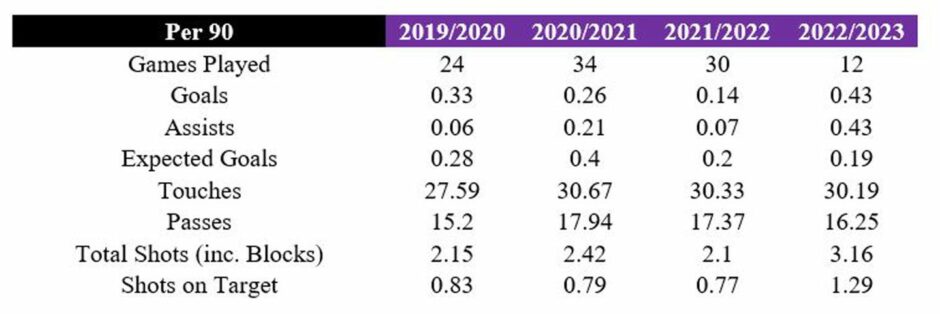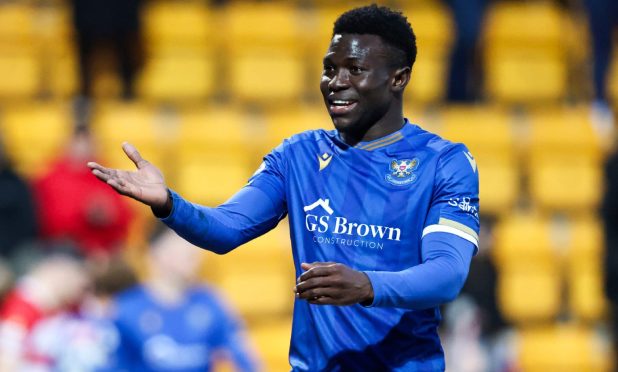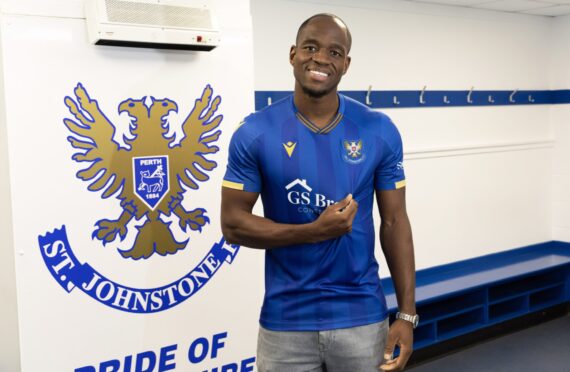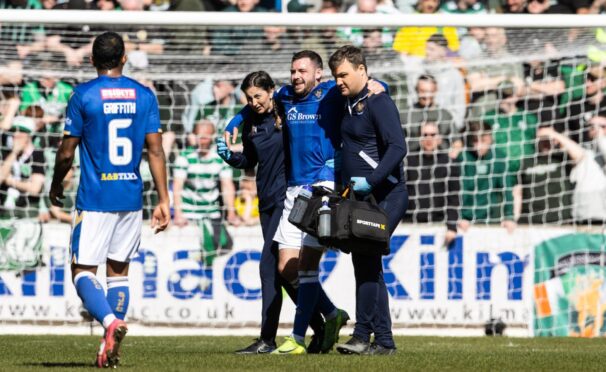Stevie May is on target to make this season by far the most productive one of his second spell as a St Johnstone player.
After returning to the Perth club from Aberdeen at the end of a protracted ‘on-off’ transfer saga, the former Scotland striker is now into his fourth Premiership campaign, one under Tommy Wright and three with Callum Davidson as boss.
Had it not been for the coronavirus outbreak, he would have played in at least 30 games in each of the three completed seasons.
And, if he avoids injury, he’ll surely hit that mark again in 2022/23 given his ever-increasing importance to the current McDiarmid Park side.
Most Saints fans would agree that his form and influence on the team’s performance is at its peak, comparable only to 2013/14 when he formed a prolific partnership with Steven MacLean, scored 27 goals and smashed a Scottish Cup semi-final hoodoo.
Twelve league appearances is a large enough body of work to start making season on season comparisons by averaging out statistics per 90 minutes.
And Courier Sport has taken a closer look to see if the Opta numbers back up the match-day impression of May’s rediscovered star man status.
Goals
It’s the most basic metric of them all for a centre-forward and no advances in football analysis will ever change it.
A goal once every third 90 minutes (0.33) was the peak in 2019/20 but this season is comfortably the highest at nearly one every second 90 (0.44).
Last season’s total, when he was largely either used as a lone striker or the support act for Chris Kane then Callum Hendry, was the lowest total at 0.14.
Assists
So May is scoring more regularly but what about his goal assists?
The rise on that front is actually even more impressive.
Perhaps surprisingly, he was down at 0.06 per game back in 2019/2020.
That rose to 0.21 in the double season but plummeted in the battle against relegation to 0.07.
Morning Saints fans 👋🏻
Here is the footage of Melker’s goal from our 2-1 win over @dundeeunitedfc on Saturday 🤩#SJFC | @spfl pic.twitter.com/UnttsMnh1e
— St. Johnstone FC (@StJohnstone) October 3, 2022
May’s three assists (for Nicky Clark against St Mirren, Andy Considine at Tynecastle and Melker Hallberg versus Dundee United) have taken him up to 0.43 – exactly the same as the number scored.
Of those six direct contributions to goals, only the near post flick-on for Considine hasn’t contributed to a Saints win.
Expected goals
This category is arguably the least relevant when it comes to May’s current form.
xG is an intuitive metric that provides a framework to evaluate each and every shot in an attempt to establish how likely one is going to result in a goal.
May reached a highpoint of 0.4 in 2020/21 and is down at 0.19 this year.
There is an argument that it shows he is now scoring from chances that aren’t as clear-cut as before.
@Stevie__may opening the scoring against @dundeeunitedfc yesterday 😎#SJFC | @spfl | #TaysideDerby pic.twitter.com/Pg1orSqemP
— St. Johnstone FC (@StJohnstone) October 2, 2022
Touches and passes
So it’s probably no surprise to see that his figures for getting on the ball and finding a team-mate have stayed close to the same mark year after year after year.
May’s touches per 90 minutes over the last three seasons read – 30.67, 30.33 and 30.19.
His passes are – 17.94, 17.37 and 16.25.
Shots and shots on target
Pulling the trigger (or, more accurately, not) has been a recurring theme for St Johnstone down the years – with success having being built on defensive rigidity as opposed to scoring lots of goals.
That has definitely applied to May as an individual.
In the 27-goal season of nearly a decade ago, he was an instinctive forward who would shoot from everywhere and anywhere.
Those days are gone and will likely never return but it’s reassuring to see that May is trying his luck more, and getting a larger number of efforts on target than at any point in this current four-year stint.
3.16 per 90 minutes and 1.29 represent a significant rise on both fronts.












Conversation